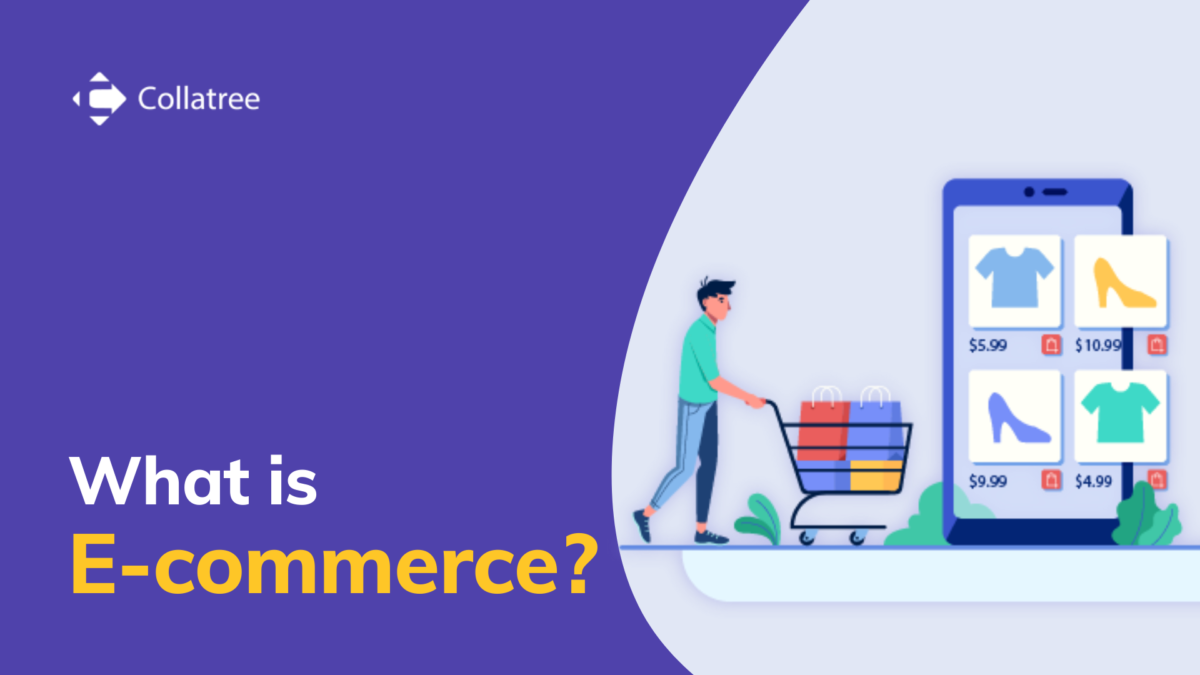
E-commerce, short for electronic commerce, has revolutionized the way people conduct business and trade goods and services in the modern digital age. With the increasing prevalence of the internet and online platforms, e-commerce has become an integral part of our daily lives, allowing individuals and businesses to buy and sell products or services with ease through electronic means. From global retail giants to small independent entrepreneurs, e-commerce provides a vast array of opportunities for anyone looking to establish an online presence or expand their existing business into the virtual realm.
In this article, we will delve into the world of e-commerce, exploring its definition, key components, benefits, and challenges faced by both consumers and businesses alike.
What is e-commerce and its significance?
E-commerce, short for electronic commerce, refers to the buying and selling of goods and services over the internet. It involves online transactions conducted between businesses (B2B), businesses and consumers (B2C), or even between consumers themselves (C2C). With the increasing popularity of the internet in recent years, e-commerce has become an integral part of modern business practices.
The significance of e-commerce lies in its ability to provide convenience and accessibility to both sellers and buyers. For sellers, setting up an online store eliminates geographical limitations and allows them to reach a global customer base 24/7. This widens their market reach significantly, leading to potential growth opportunities. On the other hand, consumers benefit from e-commerce by being able to shop conveniently from anywhere at any time. They have access to a wide range of products, compare prices easily, read reviews, and make informed purchasing decisions. In addition to convenience, e-commerce also brings cost savings for both parties involved. Online stores require lower overhead costs compared to physical retail locations because there is no need for rent or utilities expenses. Sellers can pass on these cost savings to customers in the form of lower prices or special offers. Moreover, e-commerce allows for efficient inventory management through automation systems that track real-time stock levels accurately.
Definition of e-commerce: Understanding online business transactions.
E-commerce, short for electronic commerce, refers to the buying and selling of goods and services over the internet. It involves online business transactions that take place between a seller and a buyer through various digital platforms. This can include websites, mobile applications, social media platforms, or even email.
In e-commerce transactions, sellers showcase their products or services on these online platforms while buyers browse through them and make purchases using various payment methods such as credit cards, digital wallets, or bank transfers. The entire process is carried out electronically without the need for physical interaction between the parties involved. E-commerce has become increasingly popular in recent years due to its convenience and accessibility. It allows businesses to reach a wider audience beyond geographical boundaries and enables customers to shop from anywhere at any time. Additionally, e-commerce provides opportunities for entrepreneurs to start their own online businesses with minimal upfront costs compared to traditional brick-and-mortar stores.
Types of e-commerce: Differentiating between B2C, B2B, and more.
E-commerce, short for electronic commerce, refers to the buying and selling of goods and services over the internet. It has become an increasingly popular way for businesses and consumers to engage in transactions due to its convenience and accessibility. There are various types of e-commerce, each catering to different target audiences and business models. One common type is Business-to-Consumer (B2C) e-commerce, which involves transactions between businesses selling products or services directly to individual customers. Examples include online retail platforms like Amazon or clothing stores with online shopping options. B2C e-commerce typically focuses on providing a user-friendly interface, personalized shopping experiences, and efficient delivery systems for individual consumers.
On the other hand, Business-to-Business (B2B) e-commerce involves transactions between two or more businesses rather than targeting end-consumers. This type of e-commerce often includes bulk sales or large-scale purchases of raw materials, equipment, or services required by other companies for their operations. B2B platforms may offer features like negotiated pricing agreements, supply chain management tools, and integration with enterprise resource planning systems to streamline business processes.
Benefits of e-commerce: Exploring advantages for businesses and consumers.
E-commerce, also known as electronic commerce, refers to the buying and selling of goods and services over the internet. It involves online shopping platforms, online banking, online ticketing systems, and more. The benefits of e-commerce are vast for both businesses and consumers.
For businesses, one major advantage of e-commerce is the ability to reach a global market. With traditional brick-and-mortar stores, businesses are limited by their physical location. However, with an e-commerce platform, businesses can easily expand their customer base beyond geographical boundaries. This opens up new opportunities for growth and increased revenue. Another advantage for businesses is cost savings. Operating an online store can be significantly cheaper than maintaining a physical store. Businesses save on expenses such as rent, utilities, and staffing costs associated with running a brick-and-mortar establishment. Additionally, inventory management becomes more efficient with real-time tracking systems in place.
Consumers also reap numerous benefits from e-commerce. Convenience is perhaps the most prominent advantage for consumers when it comes to online shopping. E-commerce allows people to shop at any time from anywhere in the world without having to physically visit stores or deal with long queues. This not only saves time but also provides flexibility in terms of product availability.
Challenges in e-commerce: Discussing obstacles faced by online retailers.
E-commerce, short for electronic commerce, refers to the buying and selling of goods and services over the internet. It has emerged as a popular form of business in recent years, allowing retailers to reach a global customer base and offer convenience to consumers. However, online retailers face a myriad of challenges in this competitive landscape.
One major obstacle faced by online retailers is fierce competition. The rise of e-commerce has led to an overcrowded market, making it difficult for businesses to stand out from the crowd. With countless options available at consumers’ fingertips, attracting and retaining customers becomes a constant struggle.
Another challenge is building trust with customers. Online shopping involves sharing personal information such as credit card details and home addresses, which can make buyers hesitant due to security concerns. Therefore, gaining consumer confidence through robust security measures and transparent policies becomes crucial for online retailers in establishing credibility and encouraging repeat purchases.
In addition to these challenges mentioned above, there are several other obstacles that e-commerce businesses encounter on a daily basis. These include logistical issues like shipping delays or damaged products during transit; managing customer expectations regarding product quality and delivery speed; ensuring seamless website performance with minimal downtime; handling returns and refunds efficiently; effectively managing inventory levels; adapting to changing technology trends; staying compliant with legal regulations; providing excellent customer service across various channels (phone support, email inquiries); dealing with cyber threats such as data breaches or hacking attempts – all while ensuring profitability amidst tight margins. The company’s current revenue is $3.9 billion, with a net profit of $1.2 billion for the quarter ended June 30, 2017. The company anticipates revenue growth of 3-5% during the first half of 2018 over existing guidance.
E-commerce trends: Highlighting the latest developments in the industry.
E-commerce, short for electronic commerce, refers to the buying and selling of goods and services over the internet. It involves online transactions between businesses, consumers, or both. With the continuous growth and evolution of technology, the e-commerce industry is constantly changing and adapting to new trends. One key trend in e-commerce is the rise of mobile shopping. As smartphones became an integral part of our daily lives, more people started using their mobile devices to browse and purchase products. This shift towards mobile shopping has led businesses to optimize their websites and develop user-friendly mobile apps to cater to this growing segment.
Another noteworthy trend is the integration of artificial intelligence (AI) in e-commerce platforms. AI-powered chatbots are being used by businesses to enhance customer service experiences by providing instant responses and personalized recommendations based on individual preferences. Additionally, AI algorithms are utilized for predictive analytics, allowing retailers to anticipate consumer behavior and deliver targeted marketing campaigns.
These developments in the e-commerce industry reflect a shift towards convenience, personalization, and seamless user experiences that drive customer satisfaction and ultimately boost sales for businesses operating in this digital realm. Retailers are investing in AI to create more effective customer service and optimize their marketing programs. For example, a retailer can use AI-powered chatbots to send out personalized messages based on the location of customers in a specific city or region.
Conclusion: The future and growth potential of e-commerce.
In conclusion, e-commerce has revolutionized the way we shop and do business. It offers convenience, accessibility, and a wider range of options for consumers. Additionally, it provides endless opportunities for entrepreneurs to start their own online businesses and reach customers around the world. However, it also poses challenges such as security issues and increased competition. As e-commerce continues to grow and evolve, it is crucial for businesses to adapt and stay updated with the latest trends and technologies. Whether you are a consumer or a business owner, embracing e-commerce is essential in today’s digital age. Don’t miss out on the countless benefits this online marketplace has to offer. Start exploring the world of e-commerce today!
ALSO READ / whats cyber security





